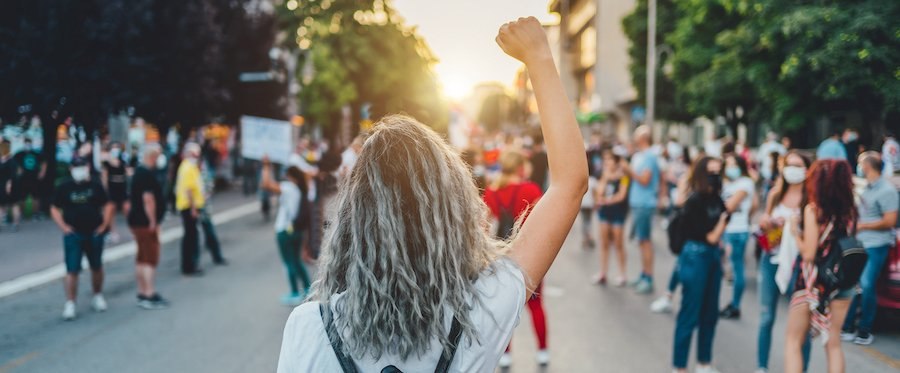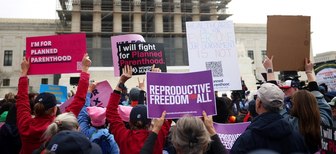A recent YouGov poll asked Americans for their opinions on 40 different social movements, including whether they believe these movements have been successful. The results suggest which groups Americans prioritize and care about, as support for different movements varies widely. Despite this broad range of support, few social movements are considered successful by a majority. Some movements are viewed as more successful than they are supported, while others receive widespread support but are seen by few as successful. As political polarization has increased, support for recent or politicized movements is often sharply divided along party lines, highlighting differing priorities between the parties.
Although few social movements are considered mostly successful by a majority of Americans, some are undoubtedly seen as more successful than others. For example, the Civil Rights and Gay Rights Movements are recognized by most Americans as predominantly successful, while others, such as the White Power and Pro-Palestinian Movements, generally are seen as unsuccessful.
Support for social movements varies more significantly. Some, like the Disability Rights Movement, receive widespread backing, with 78% of Americans in support. In contrast, the Alt Right is widely rejected, with only 10% support. On average, movements that receive greater support are perceived as more successful. For instance, both the Civil Rights and Women’s Suffrage Movements are not only mostly supported but also viewed as mostly successful by the majority of Americans.
Not successful enough, or too successful
Although movements with more support tend to be seen as more successful, there are some notable exceptions. For example, while 66% of Americans support the Native American Rights Movement, only 28% consider it mostly successful. Similarly, half of Americans support the movement for gun control, but a mere 16% view it as mostly successful. Other movements that receive substantial support but limited perceived success include the Children's Rights Movement, the All Lives Matter Movement, and the Consumer Protection Movement.
Conversely, there are movements that are viewed as more successful than they are supported. The Gay Rights Movement is a prime example, with only 48% of Americans mostly supportive, yet 56% considering it mostly successful. The Make America Great Again (MAGA) Movement, while receiving the support of only 27% of the population, is seen as successful by 33%. Other far-right movements, including the White Power and Alt Right Movements, also are more broadly seen as successful than they are supported.
Why are some movements more supported and successful?
The most widely supported social movements in the United States typically advocate for groups perceived as vulnerable, innocent, or righteous by a broad segment of the population. This includes movements defending the rights of women, children, and animals, who are often seen as particularly susceptible to harm or injustice. Movements focused on Native Americans and people with disabilities also attract significant support, potentially due to similarly broad perceptions of vulnerability
Political differences in support
Many areas of American life have become politically divided, and views on social movements are no exception. Americans’ political identity best predicts support for many social movements in the U.S. — potentially more than actual membership in the group represented by the movement. For instance, identifying as a Democrat — even a White Democrat — better predicts support for the Black Lives Matter movement than identifying as Black. Black identity, however, is a stronger predictor of support for the Black Power and Civil Rights Movements than political identity is.
Democrats also are more supportive of the MeToo, Pro-Choice, Women’s Suffrage, Second-Wave, and Third-Wave Feminist Movements than are women as a group. And this is not necessarily because women are more likely to be Democrats than men are. Democratic men are more supportive of the MeToo, Pro-Choice, Women’s Suffrage, Second-Wave, and Third-Wave Feminist Movements than women as a group are. These differences may in part be due to the fact that women are generally more likely than men to say they are "not sure" about the movements asked about.
Democrats generally are more likely than Republicans to support movements asked about in the survey. The disparity is most striking in the case of the Black Lives Matter Movement, with an overwhelming 78% of Democrats expressing support, compared to only 13% of Republicans — a 65-percentage-point gap. Democrats also are more likely to support the Trans Rights Movement, the Gun Control Movement, the Environmental Movement, and the MeToo Movement than Republicans are, all with gaps exceeding 50 points.
While Democrats are more likely to support most of the movements asked about in the survey, Republicans are more supportive of several. For the Conservative Movement, only 11% of Democrats support it, compared to 67% of Republicans. Similarly, just 7% of Democrats support the MAGA Movement, while 61% of Republicans do. Republicans also demonstrate substantially stronger support than Democrats for the Gun Rights and Pro-Life Movements, each by 42 points.
These party differences in support for various social movements can be partly explained by how each party views different groups in the U.S. Certain groups have become ideologically coded, either aligning with or opposing party ideologies, which can interact with prejudice and perceived vulnerability. For example, Democrats often exhibit more prejudice toward conservative-coded groups such as Christians, the wealthy, and the elderly, while showing greater moral concern for groups and entities they see as vulnerable, such as gay people and undocumented immigrants, and the environment. Conversely, Republicans tend to express more prejudice toward liberal-coded groups such as gay and transgender people and Muslims, while perceiving unborn children, state troopers, and symbols such as the American flag as vulnerable and deserving of protection.
Democrats and Republicans share similarly strong support for causes concerning groups more broadly seen as vulnerable, such as people with disabilities. They also are united in their lack of support for movements centering around widely disliked groups such as the alt right and white supremacists. But Democrats and Republicans sharply diverge on movements concerning ideologically coded groups. For example, some of the most highly supported movements within one party, such as Black Lives Matter for Democrats and the Pro-Life Movement for Republicans, also divide opinion the most between the two parties.
All about groups?
Although the support and success of different social movements may be linked to how vulnerable the groups they represent appear, this doesn't explain why movements defending ostensibly the same groups can have drastically different levels of support and success. Take, for example, the Civil Rights Movement, which focused on achieving integration and participation for Black Americans in U.S. society. This movement is now widely supported and considered successful, though not at the time. In contrast, the Black Lives Matter Movement is supported by less than half of Americans, and the Black Power Movement by less than one-third, despite both also advocating for Black Americans. These latter movements receive strong support among Democrats, but get significantly less from Republicans. In all likelihood, factors such as the specific goals, tactics, political context, and acceptance of the movements over time can limit or exacerbate prejudice toward social groups and the movements that represent them.
Politics have not polarized views on all social movements. In fact, the movement viewed most similarly between Democrats and Republicans is the Alcohol Prohibition Movement, which majorities in both parties oppose. Drinking, at least, is bipartisan.
— Taylor Orth and Carl Bialik contributed to this article.
Related:
- The legacy of John Lewis and the future of civil rights in America
- Who wins and who loses in America today
- Support erodes for “Black Lives Matter” slogan
See the results for this YouGov poll
Methodology: This poll was conducted online among 2,217 U.S. adult citizens on two separate surveys from April 29 - May 1, 2024 and May 1 - 5, 2024. Respondents were selected from YouGov’s opt-in panel using sample matching. A random sample (stratified by gender, age, race, education, geographic region, and voter registration) was selected from the 2019 American Community Survey. The sample was weighted according to gender, age, race, education, 2020 election turnout and presidential vote, baseline party identification, and current voter registration status. Demographic weighting targets come from the 2019 American Community Survey. Baseline party identification is the respondent’s most recent answer given prior to November 1, 2022, and is weighted to the estimated distribution at that time (33% Democratic, 31% Republican). The margin of error for the overall sample is approximately 3%.
Image: Getty









